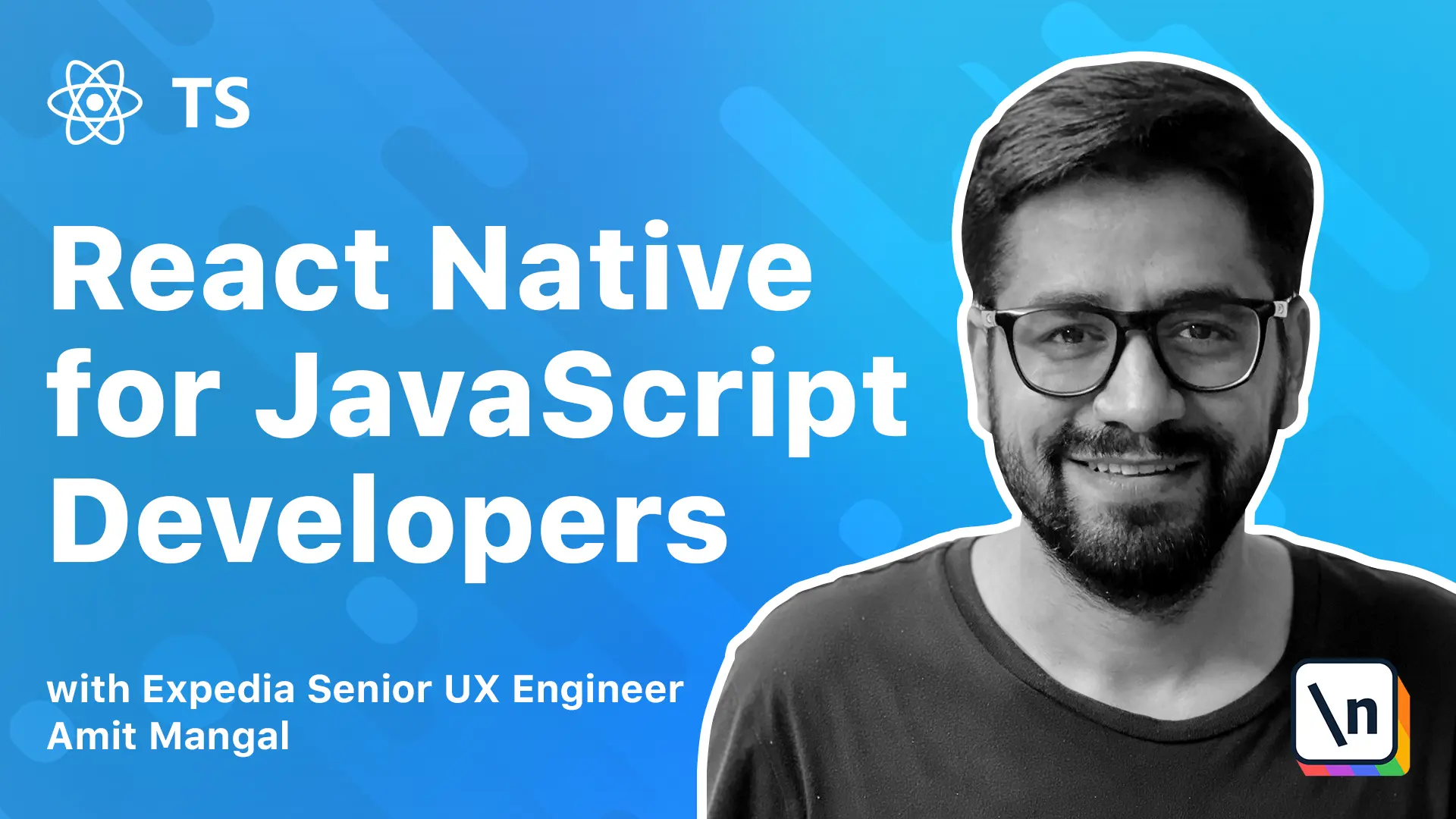About this Course
For JavaScript developers who want to learn React Native. Learn how to build not just an app, but a Product.
This lesson preview is part of the The newline Guide to React Native for JavaScript Developers using TypeScript course and can be unlocked immediately with a \newline Pro subscription or a single-time purchase. Already have access to this course? Log in here.
Get unlimited access to The newline Guide to React Native for JavaScript Developers using TypeScript, plus 90+ \newline books, guides and courses with the \newline Pro subscription.

[00:00 - 00:25] Hi, React Native for JavaScript developers is a course designed for developers who have been working with JavaScript for a long time and want to understand how it serves as an excellent platform for building apps. We will start the course by covering the fundamentals like setting up the navigation, building the screens, adding styles, building UI elements, and then moving on to more advanced topics like state management, crash reporting, setting up the analytics using middlew ares, debugging and performance optimizations.
[00:26 - 00:42] Over the course of the module, we will be building an app using a boilerplate code and like any other open source framework, React Native provides a wide range of tools and libraries to its users. We will cover the topics of the module using a set of tools that have been pre- baked into the boilerplate code.
[00:43 - 00:52] These tools are time tested and some of them are industry standards and are highly recommended. Although developers are free to substitute any of these tools with a choice of their own.
[00:53 - 01:03] The board of caution here though, as some of these tools have a direct impact on the performance of the application. With React Native, the important part is to understand how these pieces come together to create an app.
[01:04 - 01:19] This course is not just designed for someone looking to jump start building apps using React Native, but we will take a product-based development approach and learn about things to take care of to achieve native performance on both the platforms, Android and iOS. This is the first module getting started.
[01:20 - 01:25] We will look at some of the real world apps that you might not have known to be on React Native. It's going to be a fun little exercise.
[01:26 - 01:39] We will talk about storyboarding and how it aligns to product-based app development and why it is a must if you go by my advice. Then towards the end we will build and run the boilerplate code that comes along with the course.
[01:40 - 01:45] The bonus content section contains some of the libraries that deserve a special mention in the R&W. The first of them is Lottie.
[01:46 - 01:56] If you have not heard about it, do check it out. While it is mostly used for micro animations, I have had the experience of rendering some really complex animations with this without breaking a sweat.
[01:57 - 02:06] And the best part, these are not memory intensive and I have seen them work amazingly on some pretty low-end configuration phones too. React Native SVG is the second one.
[02:07 - 02:16] While it does not draw a lot of attention like Lottie, but trust me, it is the life-saver. Most of the images we ended up using were SVG.
[02:17 - 02:22] So what are the prerequisites? The course does not expect you to have any prior experience developing native apps.
[02:23 - 02:29] In fact, I was at the same place when I started off a few years ago. It is not a requirement for React Native.
[02:30 - 02:39] JavaScript is at the base of everything React Native, so that is a must. Knowledge of React is good to have as fundamentally the concepts remain the same between React and React Native.
[02:40 - 02:49] Although I would say do not let that discourage you if you have the experience with any front and framework before. The boilerplate code we are going to use over the course of this module is based on TypeScript.
[02:50 - 02:55] So if you have used TypeScript before, that is a plus. If not, we will learn as we go.
[02:56 - 03:10] Although we will be building an app as a progress to the course, I have planned the modules to be standalone as much as they could be, so that you can jump through the topics that you are comfortable with or come back to them later without requiring too much background. However, we are required.
[03:11 - 03:25] I have added a heading called prerequisites at the top of the section about what other modules you need to complete, so that you can better understand the current one . So if you do want to jump to any section, just remember to go through the pre requisites before you do that.
[03:26 - 03:36] Having said all of the above, I do recommend that you go through the modules of section one that is getting started in the order. As this sort of build up to the type of learning we are trying to achieve here.
[03:37 - 03:38] And it also lays the foundation for this entire course.